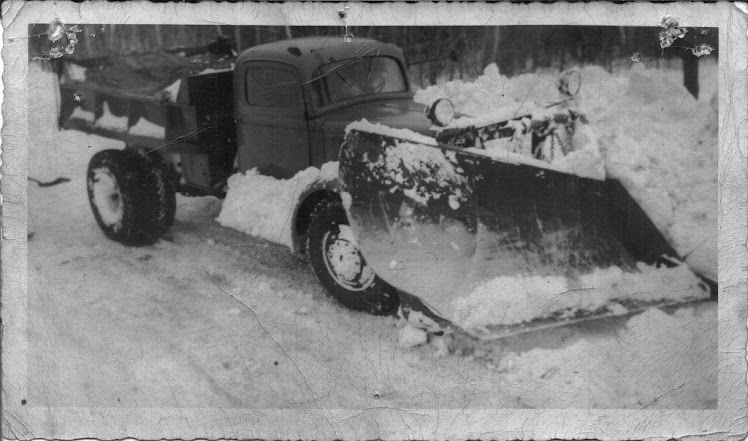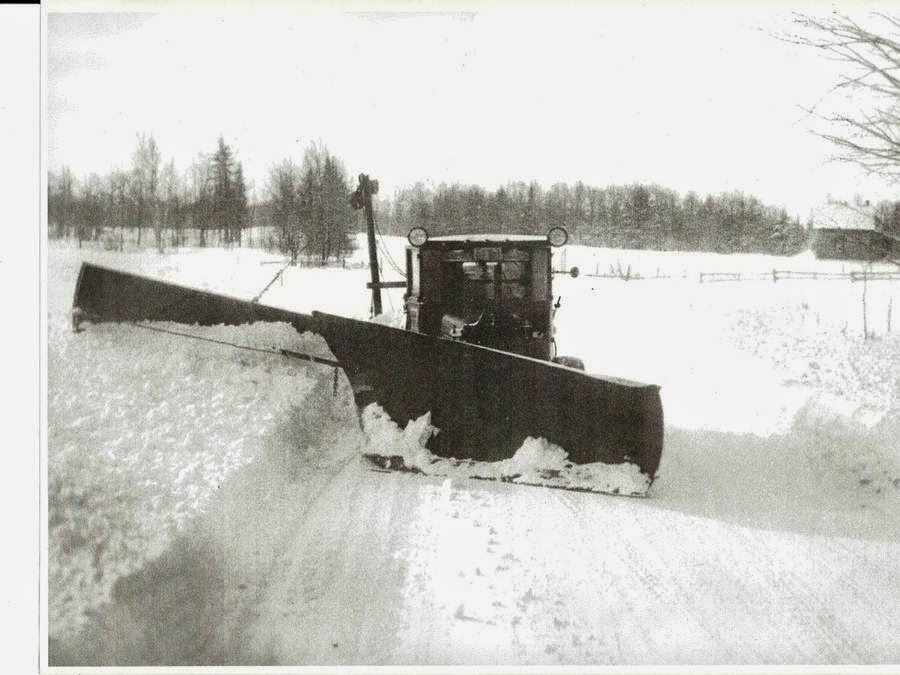There is a
sucker born every minute”. We have all
heard the phrase which is generally credited to P.T. Barnum, one of the
greatest showman in American history. In
reality, the quote was probably spoken by David Hannum as a criticism of P.T.
Barnum and his customers. Essentially
this quote means “many people are gullible and we can expect this to continue.”
Okay, so
what purpose does this quote serve in my Blog post? Simple, as stated, many people are gullible
yet to this day and even well-educated folks are not immune. Sadly, failure to do one’s homework is often
the force that creates the gullibility in the first place. There are numerous examples I could list but
my focus is on snow & ice control measures utilized on our nation’s
roadways and thoroughfares. Today’s
target is one of my favorites:
TowPlow.
If you are
engaged in winter maintenance activities then you have heard of the latest
craze, the TowPlow. It was born and bred
in Missouri by a Missouri DOT civil engineer to improve efficiencies by effectively
replacing a truck and driver. One truck equipped
with a TowPlow and one driver can do the work of two trucks and two drivers. And I believe that is a true statement. So now you are confused, what is the problem
then?
Here is the
deal, in my humble opinion; when the TowPlow was developed its only real competition
was the wing plow, which is still true today.
Wing Plows were/are very popular and especially so in the Great Plains
states. These states utilize a front mounted reversible
snowplow for snow removal and a front mounted wing plow that folds back against
the cab. The downside is the wing plow
requires two hydraulic circuits to raise and lower (front and rear). The wing plow must be raised and lowered in
the proper sequence (front goes up first and down last) to avoid “snagging the
pavement”. Some agencies would have two
employees in the cab; the driver and the “wing man” who operated the wing as the
actuation required two control levers activated in proper sequence. So, you still with me? In this particular scenario, a TowPlow appears
to be a step forward. Right?
Michigan is
an anomaly in the snow & ice removal world.
Michigan DOT, County Road Agencies, and Cities employ an underbody
scraper for “plowing” the roads. Front
snow plows are primarily used for pushing back snow banks. Rarely are they used on the pavement unless
there is extraordinary amount of snowfall.
Root Spring & Scraper located in Kalamazoo, Michigan is certainly
the driving force behind the popularity of the underbody scraper which is also
used for gravel road maintenance in the summer so it is versatile. That is a
different story for a different day.
Use of a
mid-mounted underbody scraper is not compatible with a front mounted wing plow
so wing plows were never popular in Michigan.
That all changed in the mid 1980’s with the development of the midmount
wing plow and in 1999, development of the “sequencing valve” which allowed the
wing to be controlled in the proper sequence by one lever. Now
the wing plow became a very attractive addition to the plow truck equipped with
an underbody scraper and all at a very reasonable price. Example; Most agencies employ at 12’ length
underbody scraper which fully angled will remove a 9”6” swath of snow from the
roadway. Adding a 9’ midmount wing plow positioned
at the proper angle will increase swath from 9’6” up to 14’. What this means is: a lane is 12’ wide. A full shoulder is 8’ wide. Utilizing an underbody scraper only would require
three trips to fully clean a lane and the shoulder (combined 20’). Addition of the 9’ wing would eliminate the
need for one of those trips, resulting in an efficiency increase of 33.3%. At a cost of:
$13,000.00 if wing plow is installed at time for truck buildup. You don’t have to hold an M.B.A. to realize the
potential cost savings. Many agencies
are now installing dual wings; one on the right and one on the left. This allows them to remove snow from inside
and outside shoulders on a divided highway with the same truck. An additional benefit is they use both wings
with the underbody scraper on freeway ramps (dual wings increase swath to about
20’) and can clean the entire ramp in one pass.
Thus they have increased efficiency when removing snow from ramps plus
the snow plow truck has become more versatile for about another $13,000.00.
Another option is use of 12’ wingplow moldboard which adds minimally to the
purchase cost and increases the swath from 14’ to 16’-17’. A 12’ moldboard will usually bolt right up to
the mount utilized by the 9’ unit.
Now the
TowPlow will cover a larger swath, about 20’, but comes with a cost of around $100,000.00. To date there is only a right handed version. You do get a salt hopper on the TowPlow for
the $100,000.00; so in theory at least you could eliminate one truck.
Okay, now
the rest of the story:
·
Trucks
that will be towing the TowPlow require special set-up in order to tow the
plow. And that is fine since wingplow
equipped trucks require special set-up also.
But, unless you set up all your trucks to tow the TowPlow; when the
Towplow truck breaks down or is wrecked you lose two trucks (remember the
Towplow replaced a truck).
·
Towplow
requires high displacement/high horsepower towing trucks. So unless you change purchasing specifications
on engine displacement and horsepower for your entire fleet you are restricted
o designated TowPlow trucks (remember example of truck out of service). What would be the cost of upgrading your
truck engine package on your entire winter maintenance truck fleet?
·
If
using the salt hopper feature on a TowPlow, you must increase hydraulic pump displacement
or “somebody” in the hydraulic circuit will be starved for oil. If you are using “open loop” type salt application
systems your salt hopper motors could be starved for oil which reduces your
salt application rate below the setting you programmed and you will never know
it. Well, at least the plow truck driver
will never know it; the poor motorist than spins out on an icy road will
certainly notice a problem. Cylinder
response times will be reduced or possibly the cylinder will not activate at
all if the oil supply is reduced enough.
To be effective and efficient you must change your hydraulic specification
to allow for larger pump/increased output.
A load sense piston pump with 100cc displacement is today the most
common pump used and generally works.
However, if you add a TowPlow with a salt hopper you would be advised to
increase hydraulic pump specification to 140cc.
·
Operation
of two independent salt hoppers simultaneously requires two separate control
systems or a system designed for this application. To my knowledge there are only two companies
which manufacture a controller that is designed to accurately control two independent
salt hoppers. I know agencies that are “fudging”
and getting by. They are sacrificing accuracy
on application and in usage reporting which to me defeats the purpose of using automatic
control systems. So what is the point?
·
Maintenance
turn-arounds on divided highways; you do not utilize turnarounds on divided highways
if you are using a TowPlow. You are
forced to drive to ramp to turn the unit around. You will not be cleaning cloverleaf ramps
with this unit.
Summary;
There is a
place in winter maintenance operations for TowPlows, but it is not every place. TowPlows are not a panacea for all budget
shortcomings and snow removal challenges.
Just consider upfront purchase costs alone: $100,000.00 for one Towplow versus $13,000.00
for one midmount wing plow. One TowPlow purchase cost will buy 7.5 midmount
wingplows. Two Towplows cost about as
much as one new plow truck which by the way can be used for other operations and
year around. A TowPlow is a designated
use piece of equipment designed for one specific task. These agencies that are blinding purchasing
them without completing their homework are doing a huge disservice to their
customers which ultimately are the taxpayers.
I believe that in far too many cases TowPlows are purchased to fix a problem
that does not exist and results in creation of more and different problems. Time will tell. It always does………………..
















